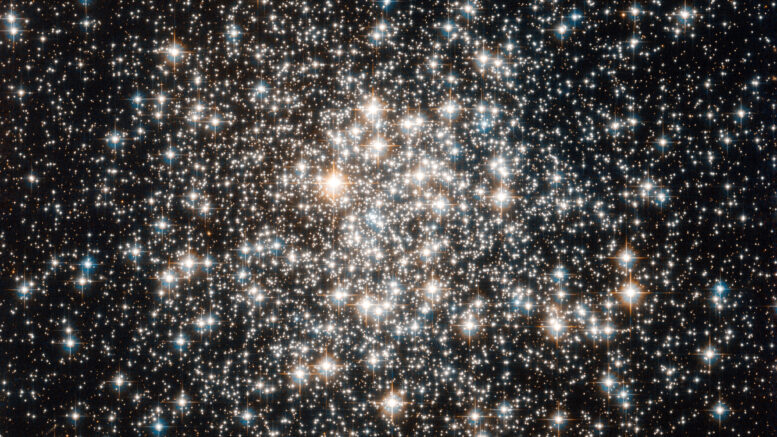Messier 107 is a globular cluster located in the constellation Ophiuchus. Messier 107 is a class X globular cluster, which means that it is very loose, with a very open stellar distribution. M107 has several dark regions, which is atypical for a globular cluster. The regions are believed to be caused by dust, which blocks the light of the cluster’s stars. The cluster lies close to the galactic plane and is one of the oldest known globular clusters.
| Description | |
| Visible From Pacific Northwest | May To August |
| Best Time To Observe | July |
| Minimum Size Of Viewing Device | small telescopes |
| Object Type | Globular Cluster |
| Designations | Messier 107, M107, NGC 6171, GCl 44, C 1629-129, MWSC 2422 |
| Right Ascension | 16h 32m 31.86s |
| Declination | -13°03’13.6” |
| Constellation | Ophiuchus |
| Number Of Stars | 100,000 |
| Apparent magnitude | +8.85 |
| Apparent dimensions | 13′ |
| Object Radius | 39.5 light years |
| Distance From Earth | 20,900 light years |
History
Messier 107 was discovered by Charles Messier’s friend and colleague Pierre Méchain in April 1782. It was added to the Messier Catalogue by Helen Sawyer Hogg in 1947, along with Messier 105 and Messier 106. M107 is the last globular cluster listed in the catalogue and, chronologically, it was the last Messier object to be discovered. Méchain mentioned his discovery in a letter to Johann Bernoulli dated May 6, 1783.
William Herschel discovered M107 independently on May 12, 1793 and catalogued it as H VI.40. Herschel was the first to resolve the cluster into individual stars. He described it as a “very beautiful extremely compressed cluster of stars, extremely rich, 5’ or 6’ in diameter, gradually more compressed toward the centre.”
John Herschel catalogued the cluster as h 3637 and later added it to the General Catalogue as GC 4211. He described it as a “globular cluster; large; very rich; very much compressed; round; well resolved.”
Heber Curtis photographed M107 with the Crossley reflector at the Lick Observatory and described it as a “bright globular cluster,” adding that “the brighter part is 3′ in diameter; with fainter extensions about 8′.”
Locating M107 In The Sky
Messier 107 can be found 2.75 degrees southwest of the magnitude 2.5 star Zeta Ophiuchi, in the direction of Scorpius.
Zeta Ophiuchi is positioned 16 degrees north of Antares, the brightest star in Scorpius and one of the brightest stars in the night sky. The best time of year to observe M107 is in the late spring and early summer.

Viewing M107
The cluster is a challenging object for binoculars, which only show a contrast change, and much easier to observe in small telescopes, which reveal a small, round, diffuse object with a slightly brighter center. 6-inch telescopes resolve the brightest stars in the outer region of the cluster, while 12-inch instruments reveal many stars across the entire cluster.
Photographing M107
Messier 107 is one of the less compressed globular clusters and is quite colorful. It is indeed possible to obtain some great shots of the cluster using several 5 minute exposure shot with a larger telescope.
https://www.cloudynights.com/topic/711184-messier-107/
Sources And Further Reading
Descriptions of all of Messier Objects can be found here.
https://freestarcharts.com/messier-107
https://www.nasa.gov/feature/goddard/2017/messier-107

Be the first to comment on "Messier 107"